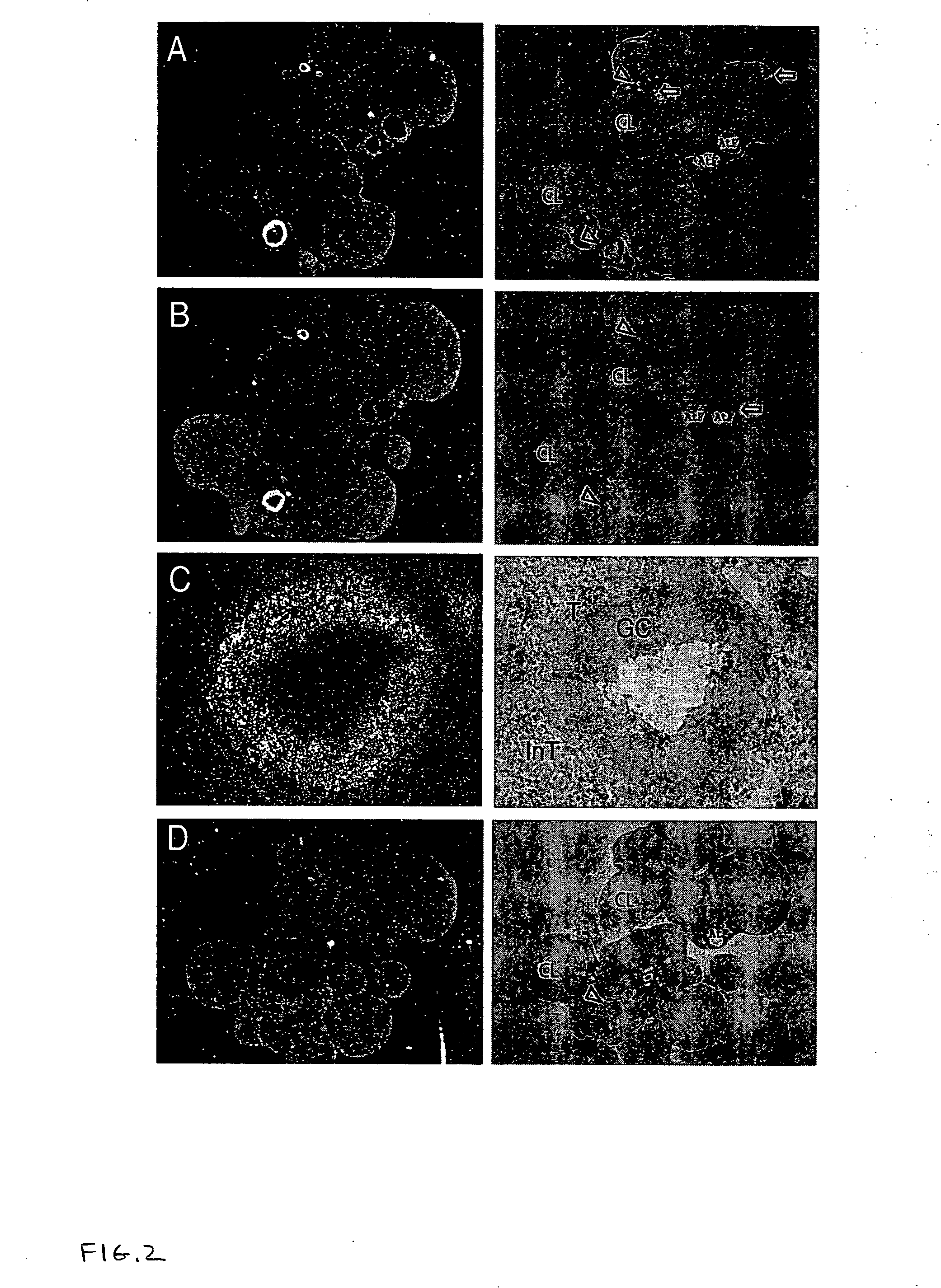Genes and agents to regulate follicular development, ovulation cycle and steriodogenesis
- Summary
- Abstract
- Description
- Claims
- Application Information
AI Technical Summary
Benefits of technology
Problems solved by technology
Method used
Image
Examples
example 1
Materials
[0044] Dulbecco's modified Eagle's Media (DMEM), Hams-F12 and antibiotics for tissue culture were from Gibco-BRL (Gaithersburg, Md.). Restriction enzymes, reverse transcriptase, T7 and SP6 RNA polymerases, and Taq DNA polymerase were obtained from New England Biolabs (Beverly, Mass.). [α-32S]UTP and [α-32P]dCTP were from New Amersham Pharmacia Biotech (Piscataway, N.J.). Oligonucleotides were synthesized by Sigma. (Coralville, Iowa). FSH, hCG and activin A were purchased from the National Hormone and Peptide Program. Pregnant mare's serum gonadotropin (PMSG) was purchased from Sigma.
Animals, Hormone Treatment, Granulosa Cell Isolation and Culture
[0045] ROG cells were cultured as previously described by Li, et al. 1997 Endocrinology 138:2648-2657. Briefly, ROG cells were maintained in suspension in a defined serum free medium consisting of F12-Dulbecco's modified Eagle's medium (DMEM) supplemented with activin A (25 ng / ml), insulin (10 μg / ml), transferrin (5 μg / ml), α-t...
PUM
| Property | Measurement | Unit |
|---|---|---|
| Gene expression profile | aaaaa | aaaaa |
Abstract
Description
Claims
Application Information
 Login to View More
Login to View More - R&D
- Intellectual Property
- Life Sciences
- Materials
- Tech Scout
- Unparalleled Data Quality
- Higher Quality Content
- 60% Fewer Hallucinations
Browse by: Latest US Patents, China's latest patents, Technical Efficacy Thesaurus, Application Domain, Technology Topic, Popular Technical Reports.
© 2025 PatSnap. All rights reserved.Legal|Privacy policy|Modern Slavery Act Transparency Statement|Sitemap|About US| Contact US: help@patsnap.com



